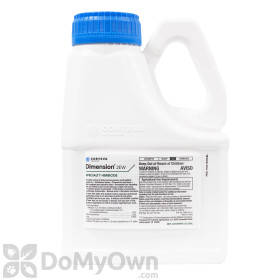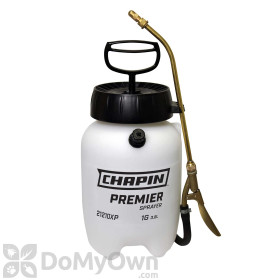
Chickweed (Stellaria media) is a low-growing edible plant that is sometimes considered a nuisance weed when it appears on lawns or other tended areas.
Timing is important when you need to get rid of chickweed. This guide will offer several of the best ways to remove chickweed plants from your lawn like a professional.
Apply a Pre-Emergent Herbicide
A pre-emergent herbicide will stop chickweed seeds from growing into new plants but must be applied at the right time to be effective. Apply a pre-emergent in the fall to interrupt the winter germination and growth cycle of chickweed for the best results. Pre-emergents could be effective through late September, though some chickweed plants may have begun to flower by this time. A second annual application in the spring--usually in February or March--can offer better year-long control over chickweed, and is usually recommended.
Many pre-emergent herbicides include recommendations against using them on recently seeded lawns, or on areas that will soon be overseeded. Always read the application directions on the label of any pre-emergent you are considering for use. The manufacturer will provide details about how much growth time is recommended before other products may be applied. Some may be applied simultaneously, but this must be confirmed on the product label!
Check out the video below for more details on how choose the right pre-emergent product and application method.
Our experts at DoMyOwn have recommended several great weed prevention pre-emergent herbicide products that can help you get rid of this winter annual weed.
Products needed for Step 1
Apply a Post-Emergent Herbicide
In most cases where chickweed is already visible and spreading in your lawn, the best solution for how to get rid of chickweed is a correctly timed application of an ester formulation 3-way or 4-way post-emergent herbicide product. This treatment would need to be applied while the soil temperature is still above 50 degrees in order for the herbicides to work. In most of the states where chickweed is plentiful, that means applying your post-emergent treatment before November or after February. These include the months when chickweed will be actively growing, and are your best opportunity to see results from a post-emergent weed killer.
These products are not labeled for use with certain varieties of St. Augustinegrass and other grasses, and you must always check the label of any product before using it on your lawn. Check out the products listed below for some of the best weed killers for chickweed as recommended by our DIY experts.
Products needed for Step 2
Hand-Pull or Loosen Chickweed Plants
Chickweed can be difficult to eliminate by hand. This prolific weed often grows into dense matted patches in bare spots on a lawn. Once the plants are mature and rooted firmly, you'll have a hard time removing the chickweed without breaking the stems and roots. Try loosening the soil with a hoe or trowel before pulling. Weeding the plants earlier in their life cycle--when the seedlings first appear in early winter--would be even easier.




















